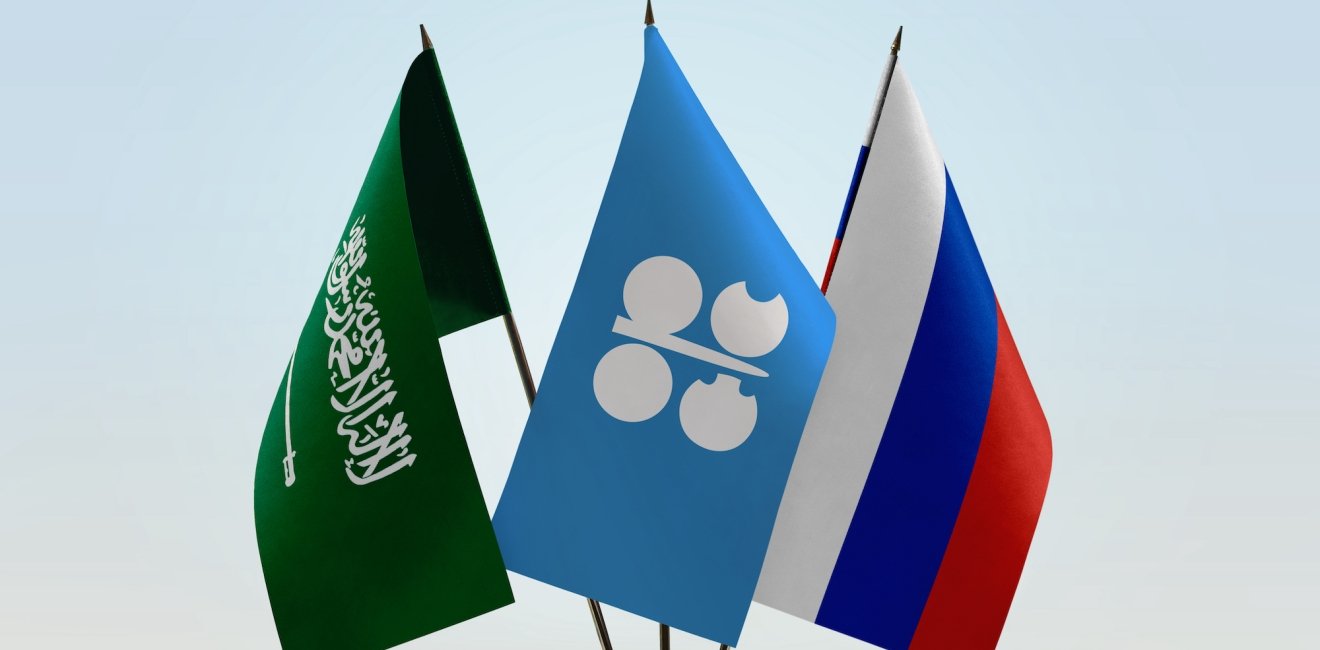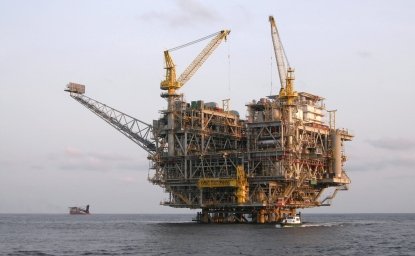In February 2015 two ambitious princes met during the Idex arms fair in Abu Dhabi. One was Mohamed bin Salman, deputy crown prince and Saudi Minister of Defense. The other was Mohammed bin Zayed al-Nahyan, the crown prince of Abu-Dhabi and its de-facto ruler. The two, known respectively as MBS and MBZ, discussed palace intrigue. MBS was envious of his older cousin, Mohammed bin Nayef, who was both crown prince and interior minister. Furthermore, bin Nayef was also the kingdom's counter-terrorism czar who was credited with dismantling al-Qaida cells in Saudi Arabia after 9/11. As such, he enjoyed good working relations with the Americans. MBS had his eyes on outshining Bin Nayef but did not know what to do. MBZ counseled him to think more creatively about Saudi foreign policy and build new alliances with China and Russia.
At the end of 2016, Russia joined a forum known as OPEC+ and began to coordinate its oil production with that of the parent organization.
Four months later, MBS arrived in St. Petersburg. During that trip, MBS had a long meeting with Putin in Moscow and the Saudi and Russian energy ministries signed an agreement on future cooperation. One year later, during the September 2016 G20 summit in Hangzhou, China, the two met yet again, this time to discuss more concretely how their countries could work together to stabilize oil prices. Both wanted to create a broader relationship that would deal also with regional issues, such as saving the Assad regime in Syria. Nevertheless, oil was going to be the linchpin of the Russian-Saudi partnership. The two leaders ordered their energy ministers to dot the i's and cross the t's. The road was now cleared for a development that surprised the world. At the end of 2016, Russia joined a forum known as OPEC+ and began to coordinate its oil production with that of the parent organization.
A history of rivalry
However, the MBS-Putin partnership is not a new phenomenon. In fact, there is a three-decade history of Saudi willingness to reach out to Russia whenever oil prices mandate it. The thing to understand here is that control of oil prices is crucial to the survival of the house of Saud. The kingdom has been using oil revenue to buy loyalty, dole out social benefits, and finance large infrastructure projects. The last one is key. Saudi Arabia has been dealing with demographic pressures. Therefore, it needs to accelerate the growth of its economy to create more jobs for a rising number of people. For all those reasons, maintaining a high price of oil in world markets is vital for the Saudi government.
Its best means of doing so is OPEC, an oil producers' cartel that the kingdom dominated. In fact, it was the commercial rivalry with the Soviet Union, which forced Saudi Arabia to create that forum in the first place. Absent from energy markets since the end of World War II, the Soviet Union came back in the late 1950s. American newspapers called it at the time a "Soviet oil offensive." To gain a share in a saturated market, the Soviets sold their oil at cheaper prices than anyone else. This created such downward pressure on the revenue of oil-producing countries, like Saudi Arabia, that they decided to form OPEC in 1960.
In those years, the Soviet Union was also a geo-strategic rival. It armed and trained the armies of Saudi-Arabia's enemies in the Arab world, such as Egypt and Syria. Riyadh retaliated during the 1970s by financing Moscow's adversaries in the Red Sea region. Most famously, Saudi Arabia funded the Islamic underground in Afghanistan – the mujahedeen – which fought against the Soviet invasion of their country.
… And cooperation
All that bad blood notwithstanding, Riyadh never shied away from approaching the Soviet Union when it needed its help. The Saudis first invited the Soviet Union to join OPEC in 1983 (while Riyadh was still funding the armed resistance in Afghanistan). The reason for the Saudi appeal was that the price of oil had been sliding downward since 1982. OPEC could not stop that trend because its members were losing market share. The entrance of new producers, which were not OPEC members, such as Mexico and the UK, changed the rules of the game. The Soviet Union was at the time one of the largest oil producers in the world. Inviting it into OPEC, then, made sense. Yet, the Soviet Union was in a period of internal disarray and was unable to respond.
Mikhail Gorbachev, who came to power in 1985, was more open to the idea of aligning Soviet oil production with that of OPEC...
As a result, oil prices continued to plummet. For that reason, Riyadh persisted in its attempts to convince the Soviet Union to join OPEC. In 1986 King Fahd fired the powerful oil minister, Ahmed Yamani, who was known for his anti-Soviet views, and in his stead appointed Hisham Nazir. One year later, Nazir flew to Moscow to meet the new man at the Kremlin. Mikhail Gorbachev, who came to power in 1985, was more open to the idea of aligning Soviet oil production with that of OPEC and, more broadly, believed that the conservative monarchies of the Persian Gulf could prove a lucrative market for Soviet goods, particularly weapons. During Nazir's visit, Gorbachev announced a 7 percent cut in Soviet oil production.
In 1989, the Soviet Union repeated that step and cut production by 5 percent. Soviet cooperation was part of the reason that the Saudis were able to stem the drop in oil prices. Indeed, the price per barrel doubled between 1986 and 1988. The Saudis were so enthused that they formed a joint working group with the Soviets to facilitate Moscow's participation in OPEC. That, however, did not come to pass. The Saudis had the impression that Gorbachev could not go forward because he was facing domestic pushback. In any case, both countries did not have a lot of runway. By 1991, the Soviet Union had dissolved.
A transactional relationship
During the 1990s, Saudi Arabia had little time for Russia as the country's oil production decreased from 11 million barrels a day (MBD) to about 6 MBD. Nevertheless, by 1998 the Saudis needed Russia's help yet again. As the 1997 Asian financial was hitting global markets, demand for oil declined worldwide and took prices with it. In that year, the Saudi oil minister Ali al-Naimi arrived in Moscow with a request: for the Russians to cut their production by 100,000 barrels a day. The Russians promised they would but never followed through.
The next year, during a G8 summit, the Russian government reneged on its promise to the Saudis. The Saudis were furious. They got the impression that Russian President Boris Yeltsin was pitching his country to the Americans as a more reliable oil supplier than OPEC. In return, Yeltsin got to participate in G8 meetings although the size of the Russian economy did not warrant it. In response, Riyadh went back to its favorite game: funding Islamic insurrection against Russian rule, this time in Chechnya. Relations between Moscow and Riyadh continued to be strained until 2003. The American invasion of Iraq which took place that year disappointed the Russian President, Vladimir Putin. Saddam's Iraq was a major trade partner and his fall hurt Russian business interests. Putin then tried actively to improve relations with Saudi Arabia.
Which brings us back to where the story began. MBS's turn toward Moscow in 2015 was not just about palace intrigue. Ever since 2010, OPEC had difficulties controlling oil prices because of the emergence of a new exporter, namely the United States. The shale revolution has turned the US from a net importer to a net exporter. There was no way for OPEC to deal with the growing market power of the US without cooperating with the Russians and Putin was happy to join the ride. The high cost of producing a barrel of oil in the harsh climate of Siberia means that Russia benefits from high prices, which aligns with Saudi interests.
Indeed, there's no evidence that the Russians ever cut their production to conform to OPEC resolutions.
From the Saudi point of view, Russia is a problematic partner. In reality, Russia cannot abide by OPEC's decisions to cut production. Due to extreme weather conditions, it's impossible to bottle oil within Russian pipelines. Pipeline oil must keep flowing, or else it freezes. Moreover, Russia has no significant storage facilities for the oil it produces. Indeed, there's no evidence that the Russians ever cut their production to conform to OPEC resolutions.
Nevertheless, Russia is a voice within OPEC that fully supports Saudi leadership. The Russians also have influence over Iran, an important OPEC member, which is something the Saudis lack. For all those reasons these countries formed a partnership that is largely limited to cooperation on price control. Should conditions in the oil market make Saudi and Russian interests collide, this partnership could dissolve. History teaches us that this has happened before.
The views expressed in these articles are those of the author and do not reflect an official position of the Wilson Center.






